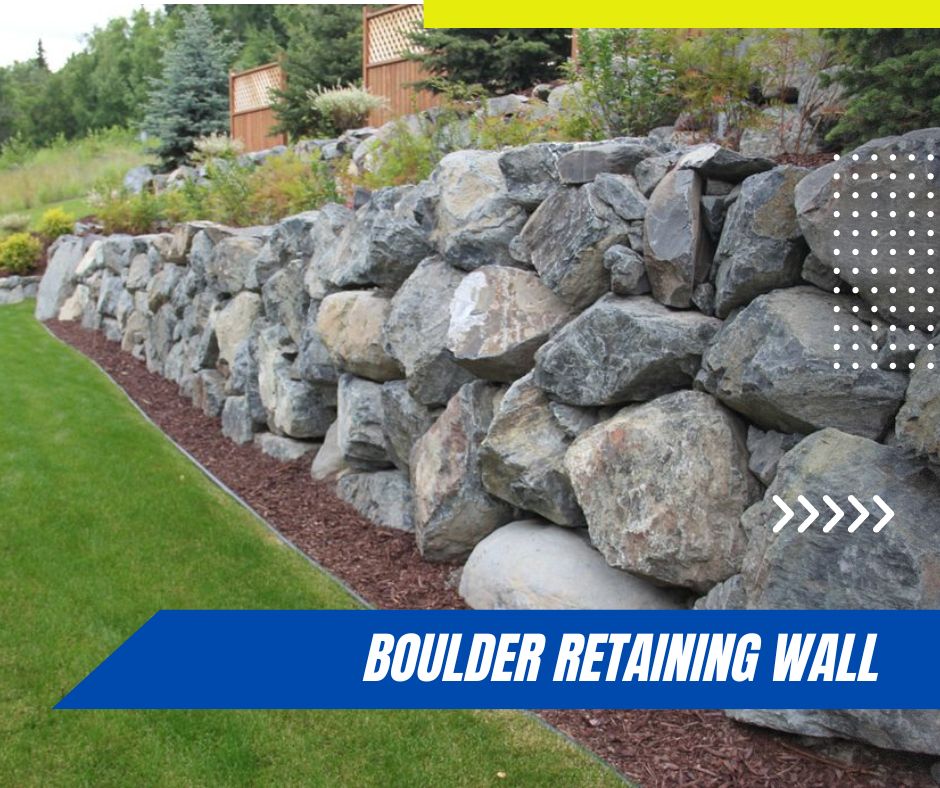Boulder retaining walls are not only practical but also add natural beauty to outdoor spaces. They are ideal for landscaping uneven landscapes, preventing soil erosion, and enhancing backyard features like pool areas, gardens, and patios.
Boulder retaining walls are made from natural rocks in various sizes, shapes, and textures, which blend with your backyard’s existing topography, enhancing the overall look and feel of your property.

Benefits of Boulder Retaining Walls
Boulder retaining wall offer several benefits. Firstly, they prevent soil erosion, which could ruin your backyard by keeping soil in place. They keep your lawn and landscaping neat and tidy, reduce soil runoff, and protect garden beds from flooding. They also stabilize slopes and hills, preventing landslides that could leave behind significant damage to your property.
Secondly, they enhance privacy and security in your backyard. Boulder retaining walls provide a physical barrier that keeps pets, children, and unwanted intruders outside your property. You can also build a retaining wall around your swimming pool to meet state safety codes and prevent accidents.
Thirdly, boulder retaining walls add aesthetic appeal to your backyard. They blend with the natural landscape and provide a unique look that complements your property’s overall design. You can choose designs that match your exterior architecture, garden style, or specific outdoor feature. Boulder retaining walls also increase property value, making them a worthwhile investment in the long run.
The Process of Building Boulder Retaining Walls
Boulder retaining walls require careful planning, construction, and installation to ensure durability and enduring beauty. The process involves several steps, including:
- Designing a blueprint: A professional landscape architect will create a design that meets your specific backyard’s needs and requirements. The designer considers aspects such as local zoning laws, soil type, drainage, and irrigation when creating the blueprint.
- Selecting rocks: The landscape contractor selects rocks that match the design’s style and texture. They choose various sizes, shapes, and colors that complement each other and create a visually appealing retaining wall.
- Clearing the area: The area is cleared of vegetation, rocks, and debris to make way for the retaining wall. The contractor creates a trench where the base of the wall will rest.
- Installing the base: A thick base of gravel is poured into the trench and compacted to create a stable foundation for the retaining wall.
- Building the wall: The rocks are carefully placed on top of the gravel base, interlocking them to create a stable wall. Large rocks are placed at the bottom, while small rocks are used at the top.
- Finishing touches: The retaining wall is finished by backfilling the wall’s open space with soil or rocks. The contractor then installs drainage pipes to allow water to flow away from the wall.
Boulder retaining walls are a practical and aesthetically appealing feature that enhances the beauty and functionality of your property. They provide several benefits, including preventing soil erosion, enhancing privacy and security, and adding unique beauty to your backyard. With careful planning and professional installation, boulder retaining walls can last for many years, providing enduring appeal and value to your property.